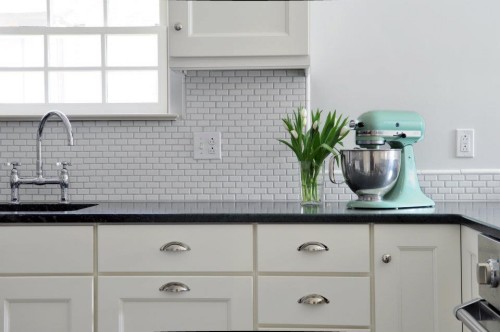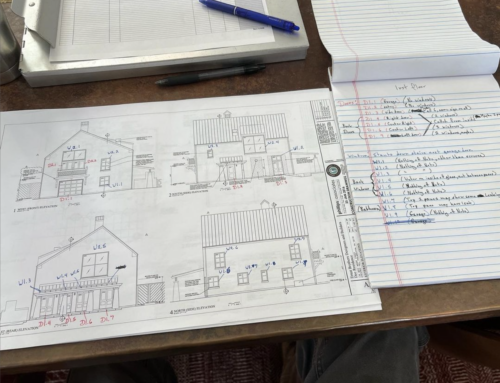The Secret to a Streamlined Kitchen? P-U-R-G-E

Remodeling a kitchen is only the first step in creating a great cooking and entertaining environment for your home. The next task is making sure the space is neatly organized and streamlined for optimum efficiency. Here, local culinary blogger Kate Donegan, aka The Philly Foodist, provides tips for making the most of your kitchen space.
Winter is the perfect time of year to take inventory of your kitchen and pare back wherever possible to ensure that the space is working properly for you and your family. Begin with the following common problem areas that create ‘bottlenecks’ in most kitchens:
Spice Cabinet — If dried herbs and other seasonings are over a year old, they have lost way too much potency to keep. Toss them. I usually find that the “basic” dried herbs, including the ones I grow myself — oregano, sage, thyme, marjoram — usually get replaced throughout the year because I use them. Regularly.
Freezer — If food has noticeable freezer burn or is more than a year old, trash it.
Cabinets and Countertops — Now is a great time to look at all of those implements, tools, and machines that you faithfully store on your counter and in your pantry and drawers. A good approach is to make your own personal plan and use it to guide you in deciding what stays and what goes.
For every section of your kitchen (drawers, countertops, cabinets, and overflow storage), ask yourself the Big Three Questions:
- Have I used this item in the past 6–12 months? Is it seasonal?
- Does it accomplish more than one kitchen task? For sure, some things that serve just one purpose need to be held onto. For example, if you cook turkeys at the holidays, you need that gigantic roasting pan. It is possible that you don’t roast anything that large more than once or a couple of times a year. But you need it. So judge accordingly.
- Do I have other implements in my kitchen that accomplish the same tasks as this?
Then, for the items you have found to be essential, decide, based on how you use them, where they should be stored.
- What stays out on the counter?
- What can be stored in drawers?
- What can go into pantry closets?
- What can go into long-term storage?
The tough part of this exercise is being honest with yourself! If you can, you will find additional space and ease of access to those things that you do use regularly. Be sure to find a resource that can make use of the items you have purged. Many charitable organizations will gladly pick up items for resale in their thrift stores. Usually, all you have to do is box them up.
If you do this exercise yearly — and, believe me, the first year is the most challenging — your kitchen will work for you. You will be able to put your hands on what you need, when you need it, and you will be a better and happier cook! Time to get started!
The Philly Foodist is an exchange of ideas regarding shopping for, cooking, and eating local, seasonal, and humanely raised food, as well as the challenges of urban “farming” and living green in Philadelphia. Follow this blog on facebook.
Image: Mark Gisi/Tabula Creative






